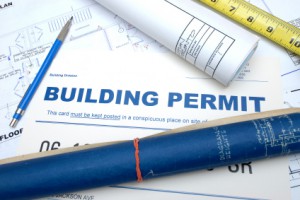 The last time we talked we discussed the new EPA Lead Safety rules that went into effect on April 22, 2010. These rules have been a big pain for the contractors and the Owners. They have added, in most cases where they apply, significant cost to projects. There is legislation that has been recently passed by the Senate to delay implementation of the program (even though it is currently in effect) until next year due to the fact there is so much confusion about the new rules and given the fact that there are so very few contractors that are licensed to do this work. Stay tuned for updates. If you want further into go to the EPA web site www.epa.gov.
The last time we talked we discussed the new EPA Lead Safety rules that went into effect on April 22, 2010. These rules have been a big pain for the contractors and the Owners. They have added, in most cases where they apply, significant cost to projects. There is legislation that has been recently passed by the Senate to delay implementation of the program (even though it is currently in effect) until next year due to the fact there is so much confusion about the new rules and given the fact that there are so very few contractors that are licensed to do this work. Stay tuned for updates. If you want further into go to the EPA web site www.epa.gov.
Today’s topic is permits. There is so much confusion about when a permit is required and when it is not. In the past, each municipality was free to choose which building standard they wanted. This created a mess because I would have to review different building codes depending on the place and code that was approved for that district. As of April 2009 the State of Ohio said enough is enough and created one residential code for the entire state. It is called The Ohio Residential Code (ORC) with governs all single family residences. This is a part of the larger Ohio Building Code (OBC) which has been around for some time and includes commercial buildings. A registered Architect is required for all Commercial work. There is NO requirement on residential work. You as a homeowner could draw your plan on a napkin, and the building department has to accept it for consideration. Of course they will put you through a lot of questions and requirements, but if you can answer them properly and produce the necessary information, they will give you a permit.
OK so when is a permit required? Section 105.1 Required…states that” Any Owner or authorized agent who intends to construct, enlarge, alter, repair, move, or change the occupancy of a residential building or structure, or portion thereof, or to erect, install, enlarge, alter, repair, remove, convert, or replace any electrical, gas, mechanical, plumbing system…shall first make application to the building official and obtain the required approval.
105.2 Building Work exempt from approval: detached structures, fences, 4 foot or less high retaining walls, water tanks, sidewalks, driveways, painting, papering, tiling, carpeting, cabinets, counter tops, prefab swimming pools, playground equipment, and window awnings.
Electric exceptions: Minor repairs and maintenance
Mechanical exceptions: replacement of any minor part that does not alter approval of the equipment or make such equipment unsafe.
Plumbing exceptions: The stopping or of leaks in existing drains or clearing of stoppages in pipes etc..
105.2.1 Emergency repairs: Where equipment replacements and repairs must be performed in an emerge3ncy situation, an application for approval shall be submitted within the next working business day to the building official.
I don’t know if this clears this up, but you can see, when it doubt, A PERMIT IS REQUIRED!
Now I want to give you a sense of what we must do for permits for an addition to a home. Let’s say you are planning an addition in Amberley.
First is after the plans are completed and ready for permitting we take them to:
ZONING: Some municipalities do their own zoning and not building permits, and others have the county do everything. Amberley does their own zoning but not building. We cannot go to the next step until Amberley approves Zoning.
BUILDING: We next take the zoning permit and submit to Hamilton County building department for Building and Mechanical (HVAC) that’s Heating, ventilating, and Air Conditioning. For some reason These two go together and are reviewed by the same plan examiner.
In conjunction with this or Electrician submits:
ELECTRICAL: Goes to IBI (Inspection Bureau Incorporated)
And our Plumber submits:
PLUMBING: Hamilton County Plumbing Department which is MSD (Metropolitan Sewer District.
There are sub departments in each category, but we don’t need to get into that.
Once all these groups agree that the plans submitted are sufficient, then, and only then is a Permit issued to commence work.
Now, back to our addition. Here is a list of required inspections on our addition that we must have a building official come and inspect and approve before a next phase of construction can commence.
Soil Inspection for footings, foundation insulation, concrete slab flooring, structural rough framing, rough electrical wiring, rough mechanical piping, rough plumbing waste and water lines, building insulation, final electrical, final mechanical, final plumbing, and NOW final building. Once all have finished, we receive a certificate of occupancy so that you can now move into your addition.
I hope these chats are productive. Please drop me a line to let me know you appreciate these newsletters.
Stan


